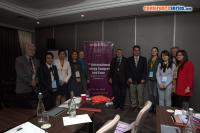
Biography
Biography: Catherine H Schein
Abstract
Interferon (IFN) were among the first cytokines to be produced recombinant, and the first antiviral proteins to be marketed. Since initial cloning in the late 1970ies, many types of IFNs and a host of cellular proteins induced by IFNs have been identified that are important in attacking viruses directly (e.g., through nuclease induction) or indirectly, through affecting cellular proteins that are required for their replication. The most pathogenic viruses (for example, Ebola) have developed mechanisms to directly interfere with these pathways, which limits the use of IFN as a direct treatment. However, mediators capable of upregulating later steps in IFN-controlled pathways may provide novel therapies to evade these pathogen induced, intracellular blockades.
The antiviral activity of IFN is “hit and run” in nature. Typically, IFN concentrations rise rapidly in the first days after infection, and then drop to undetectable levels as antibody-based responses deal with circulating virus. There is mounting evidence that this decrease in IFN levels is essential. Chronically high levels of IFN, used in treating Hepatitis C infection or diseases without clear viral etiology, such as multiple sclerosis can cause side effects. High circulating concentrations of IFN and IFN-induced proteins are found in diseases characterized by systemic inflammation, including lupus erythematosus and rheumatoid arthritis. Thus a new group of anti-IFN therapeutics is now in testing, to control immune responses to these important biological response factors.


